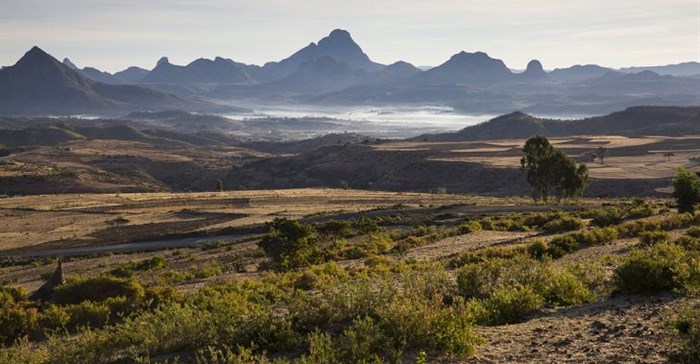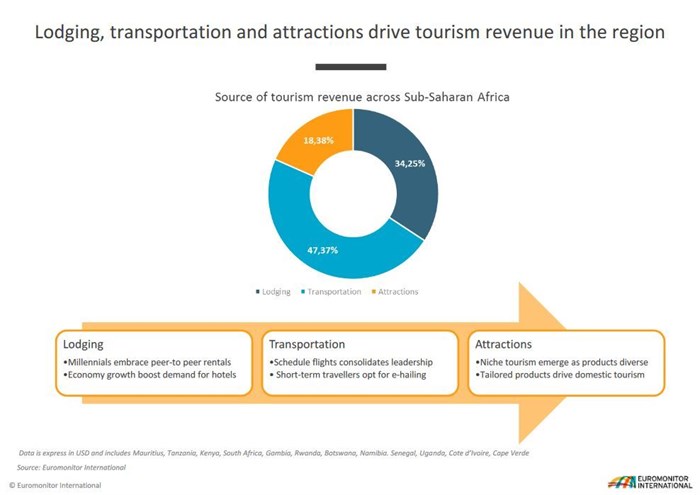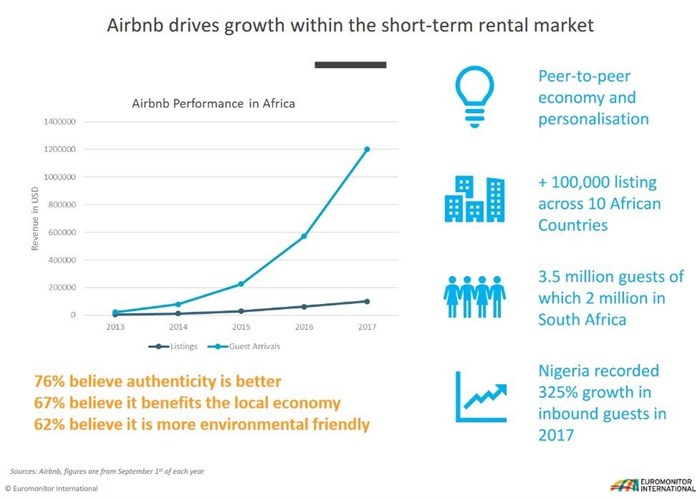A growing number of countries in sub-Saharan Africa have started looking to tourism as a viable option for revenue generation. Senior research analyst at Euromonitor International Christelle Chokossa looked at how tourism has become an economic saving grace in the region at the recent World Travel Market Africa in Cape Town.

Christelle Chokossa
She says that governments started considering the sector as a serious form of diversification after there was a noticeable growth in tourism from 2015. “We have to look at it from an economic perspective, we know that sub-Saharan Africa depends on raw materials like oil and cocoa. But the problem with raw commodities is that the price can fluctuate because it depends on supply and demand. The government decided to divert its attention because it’s not wise to put all of your eggs in one basket,” she adds.
Case in point: The Ivory Coast. After destroying 90% of the Ivory Coast’s forests to make space for more cocoa farms – which contributes 30–35% to its GDP – the country started investing more in tourism. “The remaining 10% of the forest is expected to virtually disappear in the next 20–30 years, which means that there will be less rain, less cocoa production and potentially no chocolate by 2050 because they supply 40% of the world’s cocoa. Because the country didn’t have a choice, the country started investing in several other sectors including tourism,” adds Chokossa.
“Ivory Coast improved its security, redeveloped its structures, revitalised its airline and within four years, its number of visitors grew from 441,000 to 1.8 million in 2018. What’s even more impressive, tourism used to contribute less than 1% to its GDP but now it’s at more than 3%.”
Chokossa identifies three key drivers of tourism in this region: Lodging, transportation and attractions.
Hotels may lead, but Airbnb is encroaching
As seen in the rest of the world, hotels are leading in the lodging industry. “It makes sense. We think of hotels as relatively safe and its convenient – you can go in and out and, most importantly, it has a standardised system so whenever we go to a hotel, we know what to expect; if it says five stars, we’re expecting five-star service,” says Chokossa.
And in sub-Saharan Africa, the industry is growing thanks to an influx in investment. “The pipeline of chain hotels in the region used to be a third of what it is now, compared to 10 years ago. When we look at the competitive landscape of multinational hotel groups in this region, we have leaders like AccorHotels, Radisson, Kempinski Hotels and Marriot Hotels.”
Furthermore, Nigeria houses the largest number of chain hotels but Ethiopia has the most rooms – “which accounts to the fact that a lot of people flying with Ethiopian Airlines have to sleep over before heading to their desired destination,” adds Chokossa.
While it may all be well with hotels, Airbnb is starting to give it a run for its money. Chokossa explains that it has larger appeal because of its “affordability and localisation, it’s selling experience with the locals because you’re interacting with the local homeowner.” It’s particularly popular amongst millennials who come to this region in Africa for leisure and want to experience everything in and around the country. The global online marketplace and hospitality service currently operates in 10 countries in this region with South Africa leading as the biggest market but Nigeria is making leeway. “Nigeria, in 2017, had a listing of 730. And the average night people spend in the region is 4.2, the average income per host has been $1,000 and in Nigeria, the total revenue per house was about $400,000,” she says.
Ethiopian Airlines rules Africa’s skyline
The main mode of transportation used for travel in this region is via aeroplane but this doesn’t mean that air travel in this region is profitable. “In Africa, flights are very, very expensive. To fly from Dakar to Abuja, which is literally three hours, costs the same as a 10-hour flight from France to New York in the USA. Airlines struggle in sub-Saharan Africa because of a number of factors including imported fuel and a bad habit of buying old planes,” says Chokossa.
Unlike in Western Europe, the absence of bilateral agreements between countries also means that there are more layovers. But she says all hope is not lost as countries like South Africa have made efforts to restructure the airline business by diversifying offerings. “Through low carrier costs, these airlines are making additional money by selling food during the flight and partnering with local hotels,” she adds.
Scheduled flights are the most popular and the region’s big three airlines leading air travel are Ethiopian Airlines, South African Airways and Kenya Airways. “They’re leading because they have the infrastructure that allows them to get bigger planes; they also have a bigger aircraft fleet and fly to farther destinations,” she says.
“Kenya Airways has been a very big force for tourism strategy because after the travel ban from the US was lifted, a direct flight from Nairobi to New York was created and the US is the biggest source of inbound tourism; about 11%. South African Airways used to be the queen of Africa flight travel but, unfortunately, it’s been having some financial issues. However, it’s still sustaining and benefitting from its low-cost carrier Mango, which has been supporting flights domestically and in some neighbouring countries.
“Ethiopian Airlines has been leading the sky of Africa over the past five years. The airline has managed to increase its number of employees by 85% in 2017. One thing that has been driving its growth has been its strategic partnerships with smaller players across Africa; for example, it owns about 40% of Malawi Airlines. It’s been investing a lot in infrastructure. In January 2019, it opened a brand-new airport terminal, which is three times bigger than the initial airport. It’s increased its passengers from five million to 22 million, and because of all of this, Ethiopia became the perfect getaway for Africa; it actually overtook Dubai this season,” says Chokossa.
Besides these big three, there are also smaller airlines operating in the region. “Senegal Airways entered the market last year and is already doing international flights. We also have regional airlines like Air Côte d'Ivoire and ASKY Airlines from Togo, Camair-Co from Cameroon,” she adds.
Drawing card is more than just safari
While the region’s wildlife may have been a huge drawing card for tourists in the past, niche attractions have started taking over. One major one in particular: MICE (Meetings, Incentives, Conventions and Exhibitions). “One country that takes MICE seriously is Rwanda – it’s invested a lot of money into expanding its conference centres and to attract investors to the country. It’s leading when it comes to business tourism in sub-Saharan Africa – 33% of the inbound. But what is surprising is that in 2017, Rwanda made $42m from 192 conferences. And they were planning on doubling up the figure in 2018,” says Chokossa.
Moreover, beverage and food tourism has been gaining momentum like wine tourism in South Africa; ecotourism has been attracting Europeans who are looking for places that are more environmentally friendly. While it may be controversial, religious tourism gains traction when religious leaders hold their conferences; and there is, of course, luxury tourism as well as medical tourism.
Chokossa says that niche tourism not only adds value but also creates a market for domestic tourism. “And a country that understands that is definitely South Africa. The country’s been smart because it’s realised that international tourism cannot be sustained because it depends on a lot of factors that it cannot control,” she adds. Campaigns like Sho’t Left – with the message of ‘It’s your country, enjoy it’ – has been driving domestic tourism in the country along with incentives for local citizens like that of the South African National Parks Week, which gives citizens free access to national parks.
She adds the country’s domestic tourism strategy has been successful because “it’s also given the freedom to every city to be able to position itself they it wants to, which diversifies the whole country when you look at the different provinces.”
By the end of 2017, international tourism’s contribution to the country’s GDP was about 2.9%, while domestic tourism was at 2.8% – not far off. “It’s definitely something to look into,” concludes Chokossa.
Click through to our World Travel Market Africa section for more.








































